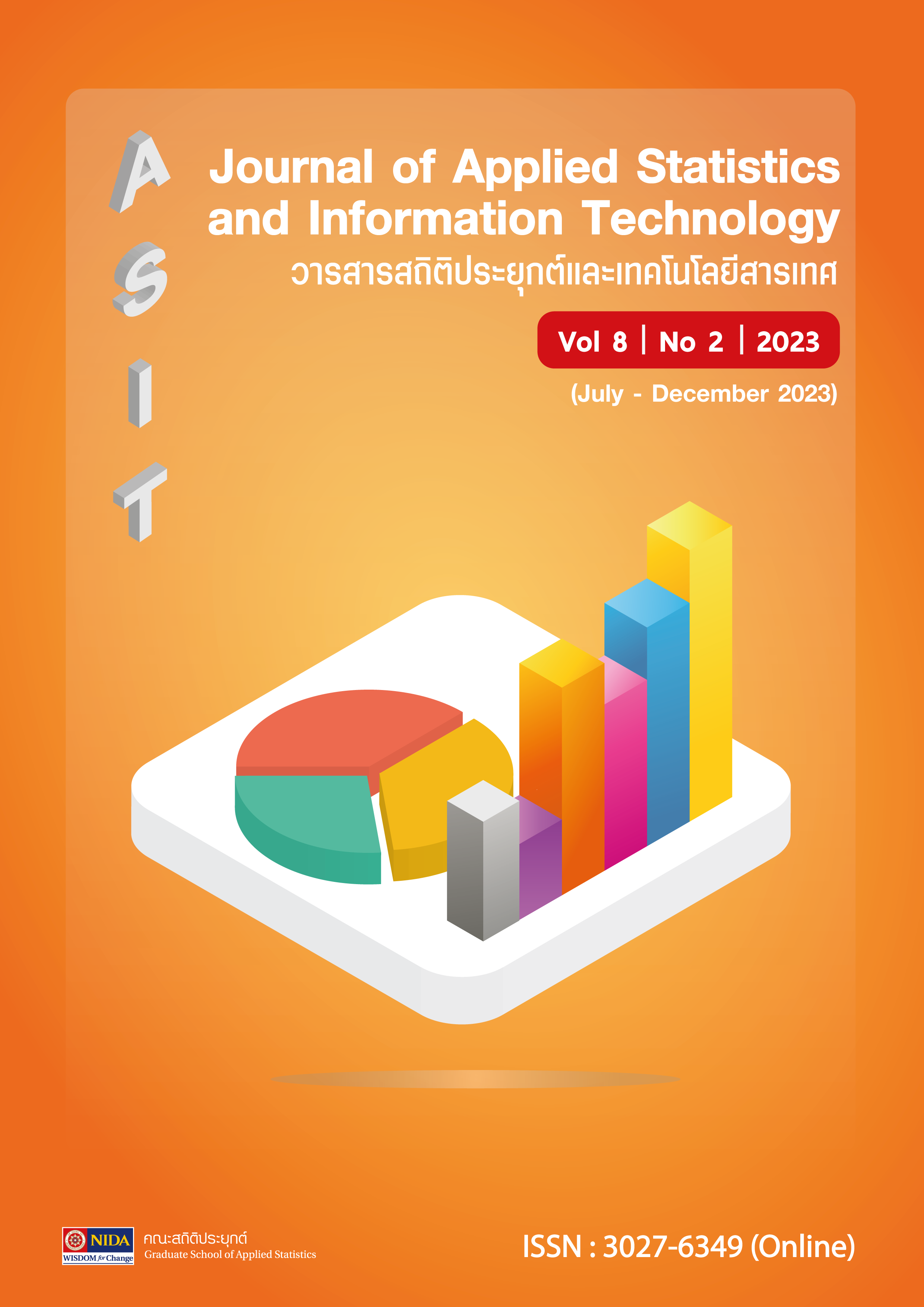The Design and Development of a Digital Game for Young Children to Train Computational Thinking Skills Like a Programmer
Keywords:
Digital Games, Computational Thinking, Control Structures in Programming, Usability Inspection, Game Experience EvaluationAbstract
Control structures are fundamental concepts utilized by programmers across various programming languages. These structures enable programmers to think algorithmically, implementing decision-making processes and iterations for program conciseness and systematic functionality. The development of computational thinking skills is crucial in fostering logic and creativity, preparing individuals for the challenges of the twenty-first century. Recognizing the importance of instilling these skills from an early age, the incorporation of the three primary control structures—sequence, conditions/selections, and loops—into a digital game becomes a pertinent educational tool for young children. This research has two main objectives: first, to design and develop a digital game named "Hamster" that trains computational thinking skills akin to those used by programmers; second, to evaluate the game experience of children engaging with it. The methodology involves analyzing the computational thinking skills framework used by programmers and studying relevant content from textbooks and exercises used in primary school computational science subjects. The digital game, created using Scratch 3.0, underwent usability testing by experts. Subsequently, 95 children participated in the game experience evaluation. Results indicated that the game's design and development align with the computational thinking skills framework, focusing on sequence, conditions/selections, and loops. The game's difficulty level, user interaction ease, and graphical elements were deemed suitable for young children. In the evaluation of game experience, children expressed positive sentiments, finding the game easy to play and engaging. They exhibited a desire to progress through levels, maintaining interest without experiencing boredom. The mouse-controlled interface, clear instructions, comprehensible feedback, and user-friendly symbols contributed to the game's accessibility, enhancing the overall experience for children.
References
กรชุลี คณะนา. (2564). การพัฒนาฮิวริสติกเพื่อการออกแบบสำหรับเกมดิจิทัลเพื่อการศึกษาสำหรับเด็กอายุ 7-9 ปี. วารสารเทคโนโลยีสารสนเทศ, 17(1), 1-11.
ชัชวาลย์ เรืองประพันธ์. (2543). สถิติพื้นฐาน พร้อมตัวอย่างการวิเคราะห์ด้วยโปรแกรม MINITAB SPSS และ SAS (Vol. 5). ขอนแก่น: ภาควิชาสถิติ คณะวิทยาศาสตร์ มหาวิทยาลัยขอนแก่น.
ทัศนีย์ บุญเติม, จตุภูมิ เขตจัตุรัส, จักรกฤษณ์ สำราญใจ, จุติมา เมทนีธร, จินตนาภรณ์ วัฒนธร, สุภาพร มัชฌิมะปุระ, ปณคพร วรรณานนท์, สุวิทย์ อุปสัย, ศานิตย์ ศรีคุณ และ ศิริพร วีระชัยรัตนา. (2557). การพัฒนาเครื่องมือวัดสมรรถนะสมองด้านพุทธิปัญญาฉบับภาษาไทย (รายงานผลการวิจัย). กรุงเทพฯ: มหาวิทยาลัยขอนแก่น
ธนวัฒน์ ภิรมย์, วริษฐา ชิตเจริญอยู่, ภวัตน์ พรมเมือง และ กรชุลี สังข์แก้ว. (2567). การออกแบบและพัฒนาเกมดิจิทัลเพื่อฝึกทักษะการคิดเชิงคำนวณสำหรับเด็ก. วารสารแม่โจ้เทคโนโลยีสารสนเทศและนวัตกรรม, 10(1), 1-20.
พงษ์พิพัฒน์ สายทอง, วีรภัทร จันทรจตุรภัทร และ ศิวดล ภาภิรมย์. (2564). การออกแบบเกมดิจิทัล. วารสารวิชาการวิทยาลัยสันตพล, 7(2), 217-228.
ภาณุมาศ เหลืองอร่าม. (2554). การออกแบบเกมเพื่อเพิ่มความสามารถในการคิดเชิงวิเคราะห์ ของเด็กประถมศึกษาตอนต้น. วิทยานิพนธ์ ศิลปมหาบัณฑิต, มหาวิทยาลัยศิลปากร.
ภาสกร เรืองรอง, รุจโรจน์ แก้วอุไร, ศศิธร นาม่วงอ่อน, อพัชชา ช้างขวัญยืน, และ ศุภสิทธิ์ เต็งคิว. (2561). Computational Thinking กับการศึกษาไทย. วารสารปัญญาภิวัฒน์, 10(3), 322-330.
ยืน ภู่วรวรรณ. (2563). ปฏิรูปการเรียนรู้ยุคโควิด-19 จากออฟไลน์ สู่โลกออนไลน์. ค้นเมื่อ 22 เมษายน 2563 จาก https://www.bangkokbiznews.com/news/detail/877251?fbclid=IwAR2TZwhh8AYmrN115y226kYUtfTtsGNihV7G-E9hi_k5jY9YrgkrakmzTyk.
วันทนีย์ มีบุญญา. (2558). การพัฒนาบทเรียนคอมพิวเตอร์ช่วยสอน กลุ่มสาระการเรียนรู้ภาษาไทย บทละครเรื่องเงาะป่า สำหรับนักเรียนระดับชั้นประถมศึกษาปีที่ 4. วิทยานิพนธ์ ศึกษาศาสตรมหาบัณฑิต, มหาวิทยาลัยศิลปากร.
สถาบันส่งเสริมการสอนวิทยาศาสตร์และเทคโนโลยี (สสวท.). (2560). คู่มือการใช้หลักสูตร สาระเทคโนโลยี (วิทยาการคำนวณ). กรุงเทพฯ: องค์การค้าของ สกสค.
Brennan, K. and Resnick, M. (2012). New Frameworks for Studying and Assessing the Development of Computational Thinking. Proceedings of the 2012 annual meeting of the American educational research association, Vancouver, Canada.
Futschek, G. (2006). Algorithmic Thinking: The Key for Understanding Computer Science (R. T. Mittermeir Ed. Informatics Education – The Bridge between Using and Understanding Computers. ISSEP 2006. Lecture Notes in Computer Science ed. Vol. 4226). Springer, Berlin: Heidelberg.
Kalelioğlu, F., Gülbahar, Y., Doğan, D. (2017). Teaching How to ThinkLike a Programmer: Emerging Insights. In H. Ozcinar, G. Wong, & H. T. Ozturk (Eds.), Teaching ComputationalThinking in Primary Education (pp. 18-35). Hershey, PA: Information Science Reference.
Liu, F. (2018). Design for Kids Based on Their Stage of Physical Development. cited 2020 Apr 6 Retrieved from https://www.nngroup.com/articles/children-ux-physical-development.
Lockwood, J. Mooney, A. (2018). Computational Thinking in Education: Where does it Fit? A systematic literary review. International Journal of Computer Science Education in Schools, 2(1), 41-60.
Sungkaew, K., Lungban, P., and Lamhya, S. (2022). Game development software engineering: digital educational game promoting algorithmic thinking. International Journal of Electrical and Computer Engineering (IJECE), 12(5), 5393-5404. doi:http://doi.org/10.11591/ijece.v12i5.pp5393-5404.
Downloads
Published
How to Cite
Issue
Section
License
Copyright (c) 2023 Journal of Applied Statistics and Information Technology

This work is licensed under a Creative Commons Attribution-NonCommercial-NoDerivatives 4.0 International License.
เนื้อหาและข้อมูลที่ปรากฏในบทความที่ตีพิมพ์ในวารสารสถิติประยุกต์และเทคโนโลยีสารสนเทศถือเป็นความคิดเห็นส่วนบุคคลของผู้เขียนแต่ละท่าน ความผิดพลาดของข้อความและผลที่อาจเกิดจากนำข้อความเหล่านั้นไปใช้ผู้เขียนบทความจะเป็นผู้รับผิดชอบแต่เพียงผู้เดียว บทความ ข้อมูล เนื้อหา รูปภาพ ฯลฯ ที่ได้รับการตีพิมพ์ในวารสารถือเป็นลิขสิทธิ์ของวารสาร หากบุคคลหรือหน่วยงานใดต้องการนำทั้งหมดหรือส่วนหนึ่งส่วนใดไปเผยแพร่ต่อหรือเพื่อกระทำการใดๆ จะต้องได้รับอนุญาตเป็นลายลักอักษรณ์จากวารสาร ก่อนเท่านั้น



